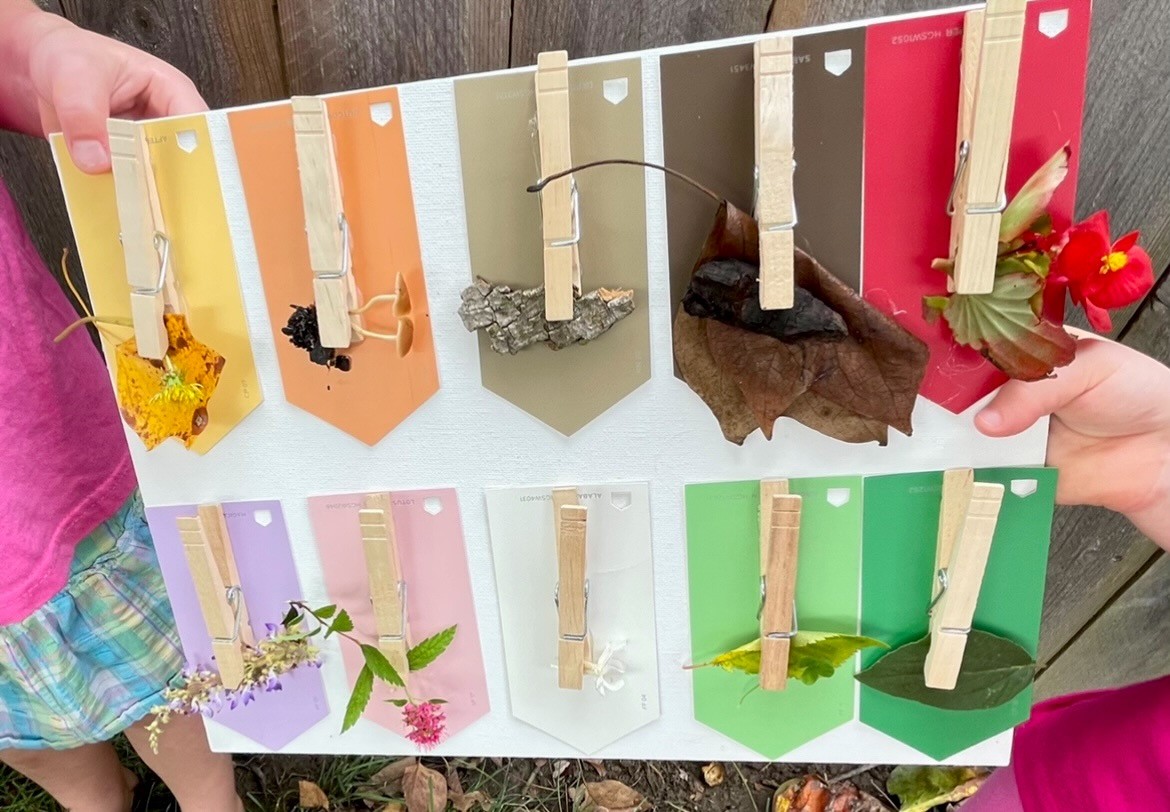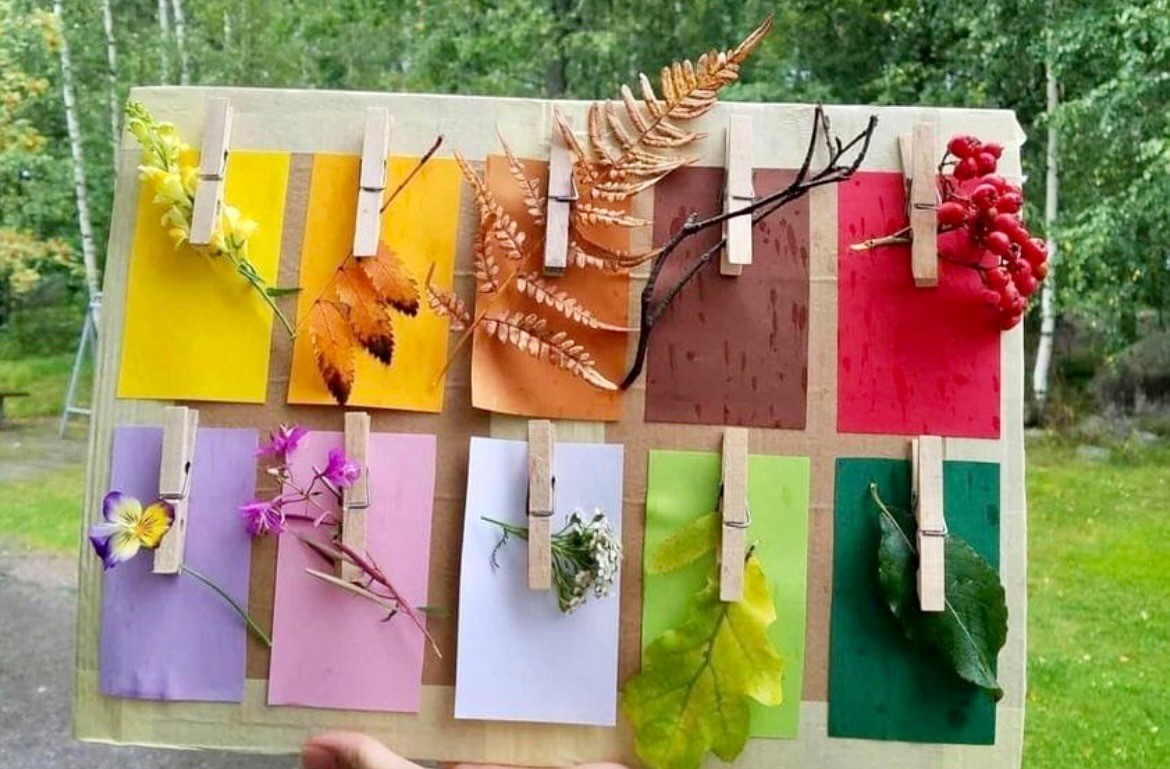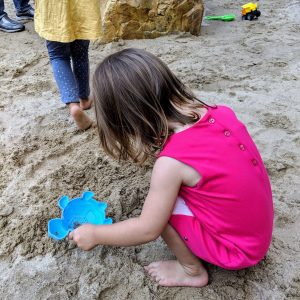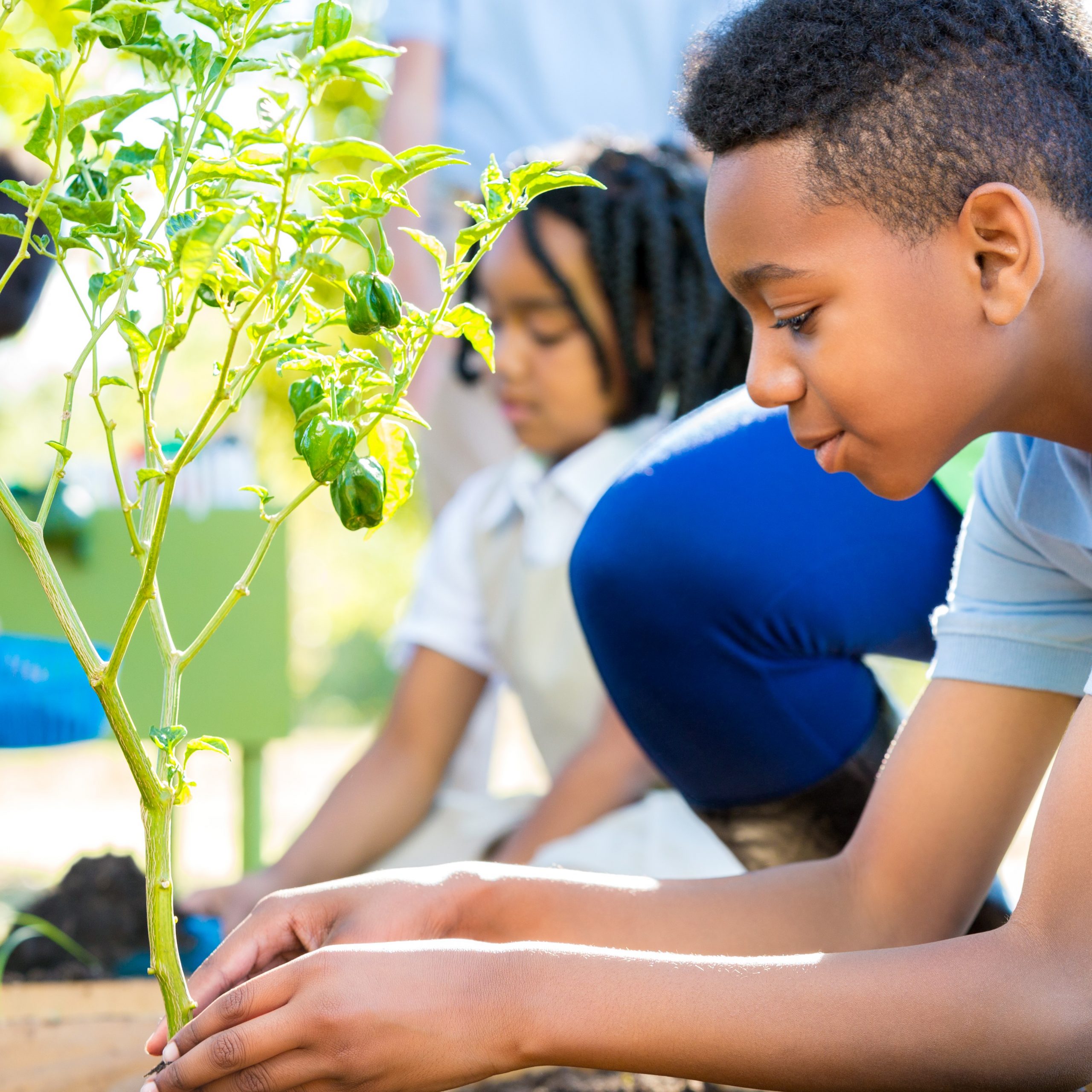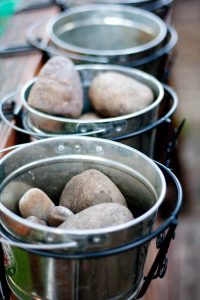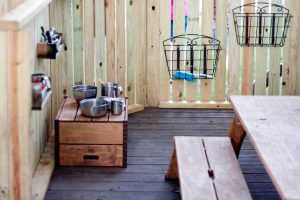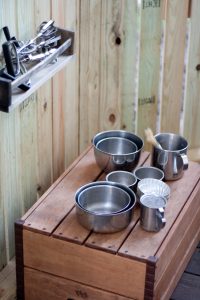When preparing children for school, parents and teachers acquire all the tools that will be essential for their success in the classroom. Pencils, paper, crayons, blocks, baby dolls and books are all accessible for making the year successful. They are considered important pieces of the education process.
If you are fortunate enough to have a program that also provides fresh air and time for play outdoors in the winter months, consider yourself extremely lucky! However, your child will need a whole different list of supplies to make sure this time is equally successful.

Clothing is a crucial piece of the outdoor experience!
A few years ago it became clear to me that if I was supplying stumps, loose parts and the time to be outdoors in nature, our program had to have clothing available for backup. Clothing is a crucial piece of the outdoor experience. Teachers often ask me how long it takes to get everyone dressed to go outdoors? Trust me, the time it takes will get shorter and shorter very quickly. And the process is a learning lesson in itself. There is a sequential order involved. It is a lesson in self-sufficiency. What could be a better use of our time? With so many children attempting to get ready at the same time, children learn to independently get ready on their own. Our children love to play in the snow and they know that getting ready is part of the process. A few years ago I had a two year old that could Suit Up and Boot Up faster than her older counterparts.
I am always curious how others make this work in their programs. Like anything else in our classroom, I start with baby steps and tweak it as I go. I encourage you to try and get outdoors every day. It is so good for both our mental and physical health. However, you need the tools for this to be successful. If you have children who don’t bring their “pencils” to class, you must supply them.
Here is our version of Suit Up and Boot Up.
You can do this! Baby steps!
- I start by setting up stations or centers. There are many stages of dress and it can take a lot of space, so offer that space to keep peace in the room and the focus on getting dressed. You don’t want everyone standing on top of each other trying to get dressed. I start at one end of our room and lay the stations out ending at the exit door. You could also do a circle. After a day or two the children will help you lay out the stations.
- After everyone has gone to the bathroom, we are ready to get serious!
- We start with snow pants. Be aware that for some families this is an extra expense that they have not budgeted for or simply don’t understand because the adults quit playing in the rain and snow! We always try to have an extra set or two around. If we supply the blocks and dolls, we also need to supply back up winter clothing for those who don’t have what they need on any given day.
- Then we have stations for their boots, coats, hats and mittens. By now they are standing by the door for the last inspection and the help they may need with zippers, buttons, buckles or mittens.
Car mittens vs snow mittens
Which brings us to mittens or gloves. For the very young, I am a big fan of mittens, just because they are so much easier to get on. As the children get older though, sometimes they just need the flexibility and precision to build or pick things up with gloves. This is where I am on a one-woman campaign for new vocabulary words.

Car mittens vs Snow Mittens (gloves qualify but it ruins my campaign slogan!) Fleece and wool mittens are good for car rides, but if you are going to sled, build snowmen, eat icicles or just PLAY in the snow you need SNOW mittens or gloves. Any waterproof glove or mitten will work, but really great ones go up past your wrist. They allow you to play for longer periods of time and stay warm in the winter temperatures. I knew my vocabulary word was catching on when a four year old sadly walked in the door and announced, “I could only find my car mittens today.” Poor kid. He looked devastated. He knew the consequences. There are of course natural consequences to not wearing the proper clothing. You get wet, cold, tired and very crabby! Many times, children will not remember the snow play from a year ago. This is a brand new experience for them, even if they were outdoors daily last year! We want this to be a successful and enjoyable experience for them. We need to supply the tools for our day to be fun and stress free!
What do you do in the snow?
I often get asked, “What do you do in the snow?” We play! The night before the first predicted snowfall, I retrieve all the sand buckets and shovels and molds. These are great tools to add to snow play. If they are buried or frozen in the sandbox, it is an impossible task. Trust the voice of experience on this one!
Our little friends love to help shovel, build snow friends and snow angels. This is a whole new world of adventure and investigations for them. Just walking or running in snow is a new adventure! We have spent hours searching for ice and then working to remove it from whatever container it may have formed in. Slipping and sliding on ice? Ice skating without the cost of skates! Giggles galore, no broken bones to report! One hard fall will usually send a child off to find something else to do, but there are always a lot more laughs than tears. Trust the child! Jumping off any height only to land in a pile of fluffy white stuff to break the fall, can entertain us for long periods of time. Sliding down snow filled slides or jumping off a swing when the snow is just inches below it, are all new experiences. Finding animal tracks from brave squirrels, hungry birds or the neighbor’s cat can buy us a good half hour of fun. When the winter days are so short that the children are coming to us in the dark, and heading home in the dark, getting outdoors in sunshine or at least daylight is so very good for our mental health.
Don’t forget the clean-up!
After hours of play, the order is reversed. I set up laundry baskets and child size benches outdoors, with the last basket for boots next to the door so they can step right in on a dry floor. The children strip off their clothes and put them in the proper basket. This works well for separating wet clothing and boots away from our dry hats and coats. It also reinforces independence and sequencing as the children try to do this process on their own! (Those snow pants can be ornery sometimes!)
Of course nothing completes outdoor winter play quite like a big warm cup of soup or hot cocoa! If the temperatures cooperate and the sun is warming your soul, try an outdoor lunch. Hot soup, cheese and crackers, apples and carrots and milk! You can do this! Start with little steps and build your way up!
Remember, there is no such thing as bad weather, just bad clothing! It will change your winter play!
Creating a nature scavenger color-hunt game is a fun nature-themed activity to get your group outdoors. This is an activity that, no matter their age, they will stay busy and observe as they play creatively and explore outside.
You can use a canvas panel or a piece of cardboard, I would say roughly the size of a medium-large pizza box. You then want to take 10 color paint swatches. I like to take a walk in my space and quickly take 10 pictures to match when I get to my hardware store. This is something that will, of course, change with the seasons.
We did 10 colors; my group is 2.5-4 years old. It’s entirely up to you how you choose to do this; you can cut smaller pieces of cardboard and give each child 5 colors; you can do it as a group as we did. You can add shapes by cutting the paint sample into a circle or triangle. You can also use this as a take-home activity for family engagement. Ask families to bring it back and discuss it with the group.
So after you have the canvas panel or cardboard, the color swatches, and 10 clothespins, you want to hot glue the colors swatches down and the clothespins. Then go explore for colors!
You can set rules for the game, like the color green can not be grass. Once the child finds the color, they yell “I found yellow”, clip it, and attach it to the board. We display our board and showcase it for pick up. Children are always so proud to name what they found and the color it matches.
Summer is here and if you have a safe space for children to play outdoors and have fun in the sun. This fact sheet from the Environmental Protection Agency (EPA) helps you understand how to protect yourself and the children in your care from over-exposure to the sun. It includes information on how to read the UV Index and how to be safe when in the sun.
Welcome Spring!
Let’s take full advantage of the warm weather and have some safe fun outside!
Incorporating arts into the outdoors is a great way to encourage creativity, exploration, self-expression, and mobility skills development, all while enjoying some sun!
Sharing a simple recipe for outdoor chalk paint!
Printer friendly – Chalk Paint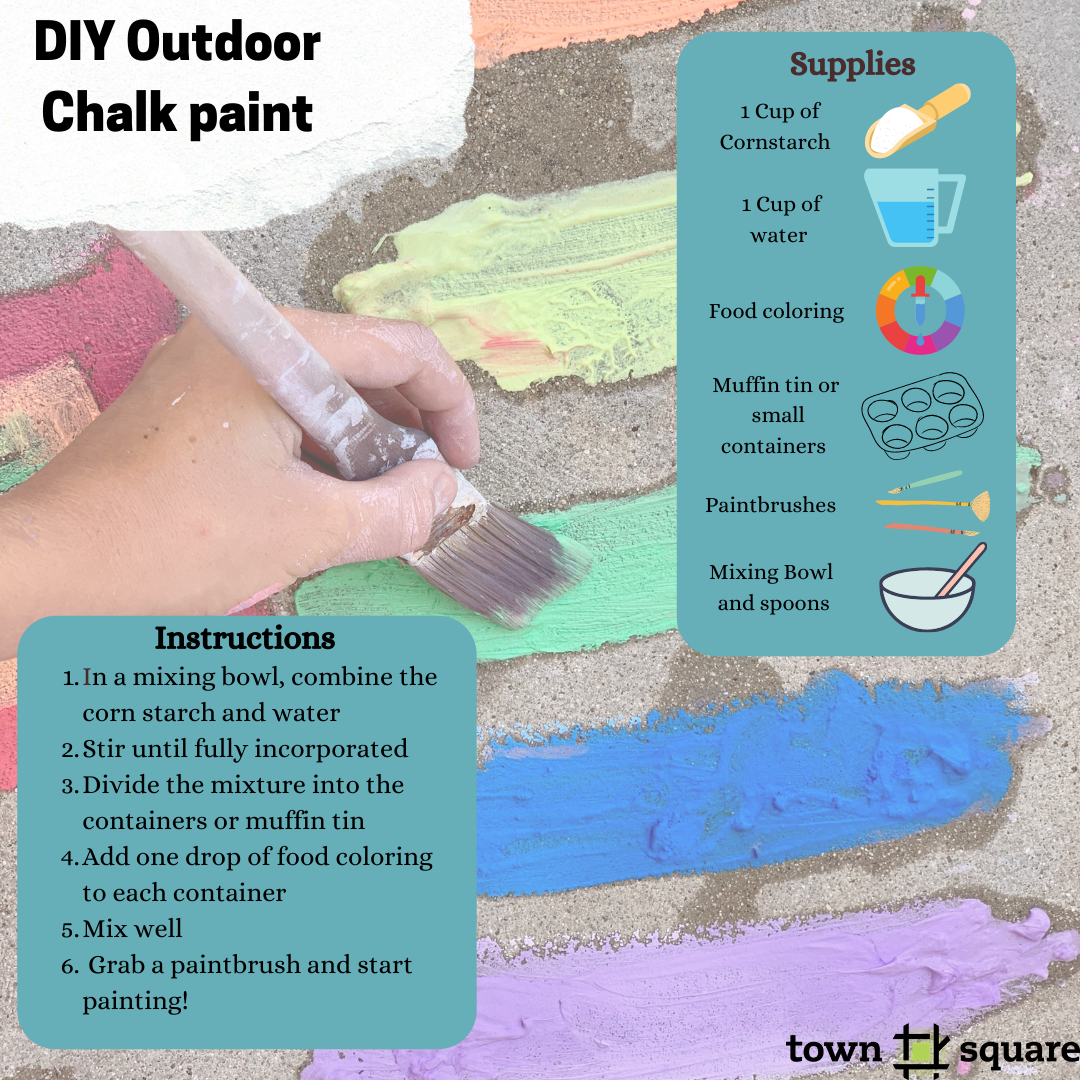
Nature Play as an Everyday Joy of Childhood
For Kids, Frequency Requires Proximity
Most of us who enjoyed nature play in our childhoods realize that it didn’t matter if we had a pristine patch of forest to play in or just a couple of vacant city lots. Either way, there were endless things to find, explore, capture, imagine, and play with. But what was important is that these places were right there, within our walking/running/biking distance. No car, no parent, and no schedule were needed to get outside and play in nature.
The children and nature movement is fostering wonderful new ways for kids to play outdoors, such as designed natural playspaces, family nature clubs, and naturalized schoolyards. These and other similar efforts are valuable steps — not only for the kids, but for parents who are re-considering their children’s indoor, nature-deprived lives. Yet most of these new approaches are challenged in one vital dimension: frequency.
When Dr. Louise Chawla (University of Colorado) researched influential childhood experiences in nature, she found that, “The special places that stood out in memory, where people formed a first bond with the natural world, were always a part of the regular rhythm of life.”1 Those powerful experiences didn’t typically come from annual family camping trips, but rather from day-after-day, week-after-week events in children’s lives. Actually, no special research is needed to realize that frequent childhood activities have more lasting impact than ephemeral ones. For instance, practicing the violin once a month is not a very effective strategy! Is it better than nothing? Perhaps — but only if you set your sights very low.
The same equation applies to nature play. If we want it to have maximum impact, then it needs to be “part of the regular rhythm of life.” It seems unlikely that we can achieve this solely through monthly meet-ups or widely scattered playspaces — strategies that require parents, cars, and calendars, and thus compete for time within families’ hectic schedules. Are these approaches valuable? Absolutely! Are they sufficient? Unlikely.
If we really want to power-up nature-based play, it needs to be available where children can enjoy it almost any day, without adult involvement or confining schedules. For most kids this means either home yards or neighborhood parks — and (sadly) only the former is likely to alleviate the fears of 21st-century American parents. Can a typical quarter-acre suburban yard actually support nature play? Or a city lot half that size? Or an apartment courtyard? The answer is yes, especially for kids of about two to eight years old. Younger children’s worlds are much smaller than those of adults. They don’t need sprawling spaces or eye-popping vistas. Their attention naturally focuses on tiny and manipulable pleasures: on dandelions rather than rose gardens; on earthworms rather than herds of bison; on a patch of dirt to dig in rather than a yawning cave to explore.
Unfortunately, the typical American yard is no haven for nature play. Good nature play requires “rich” settings — that is, a diversity of plants, animals, and landforms that create endless opportunities for discovery and engagement. Turf grass lawns, solitary shade trees, and a few neatly trimmed shrubs do not meet these criteria. However, even the sparest yard can be augmented for good nature play with a little thought, a dose of elbow grease, and much less money than what those elaborate backyard play sets cost.
The key is to create yards with a “density of diversity:” a collection of micro-habitats that will harbor lots of natural discoveries and delights throughout the seasons. These micro-habitats might include a shrub thicket, a wildflower garden, a jumbled pile of boulders, a tiny garden pond, a butterfly garden, a berry patch, a mass of tall native grasses, or even a space allowed to just grow into whatever comes up! Once you’ve established a few of these tiny worlds in your yard, you can enhance them with a digging pit or a giant dirt pile, a couple of large logs, bird and toad houses, a bench or hammock in a quiet nook, and plenty of “loose parts” to nurture creative and constructive play. These loose parts can be branches, driftwood, cattails, bamboo poles, boards, tree cookies (log slices), tarps, seed pods, pine cones, large boxes, hay bales, and whatever else you can readily scrounge up.
By focusing your primary efforts on creating multiple micro-habitats, you will ensure authentic nature play: interactions with real nature, in all of its beauty, wonder, unpredictability, and adventure. Manufactured outdoor play components — like the plastic play equipment designed to look natural — do not create the same connections to the natural world. Kids can’t peel the bark off a plastic log to find rolly-pollies, and they won’t find monarch caterpillars feeding on fiberglass leaves. In fact, one big, over-grown wildflower bed — or a patch of flowering shrubs laced with tiny paths — will bring more lasting and real nature play to your kids than will any human-made product!
Note, though, that nature playscapes are more “messy” than most home landscaping, so you may want to keep much of your nature play zone in the backyard where it won’t generate hostility from neighbors who think front yards should look like golf greens. However, certain nature play features are usually “dressy” enough to bring into front yards, like butterfly gardens, boulders, and herb gardens. And by highlighting street-side nature play, you may encourage other local parents to think more about “kid-scaping” their own yards. Nature play zones get better and better when more of your neighbors imitate and add to your own efforts!
None of these steps towards home-based nature play require great knowledge, training, or expense. They can be implemented bit by bit, and your plans can be in constant flux as you discover what your kids and their friends most enjoy. The ultimate goal is to create enough nature play “critical mass” so that your kids are excited to play in their own yards — day after day, and whenever they wish. Then nature play will be a regular joy for your children; then it will achieve the frequency needed to influence and benefit them for decades to come!
Article courtesy of Community Playthings
Children love to play outdoors, but in the winter it is not always possible with very low temperatures. This can be disappointing for children, especially when there is fresh snow on the ground.
You can offer children the option to play with snow indoors. Scoop snow into a bucket or other large container and put the snow in a sensory table (if you have one), the sink, the tub, or even a plastic container (such as an under the bed box) placed on some towels on the floor. Children can:
- Build a tiny snow person
- Make impressions in the snow with hands, cups, shovels, or other tools
- Use spray bottles to spray color on the snow (a few drops of washable tempera paint in a spray bottle full of water works well)
Talk about what happens to the snow that was brought inside compared to the snow they can see through the window outside as well as how the snow feels on their hands.
Goals: Use senses to explore and build vocabulary and language skills.
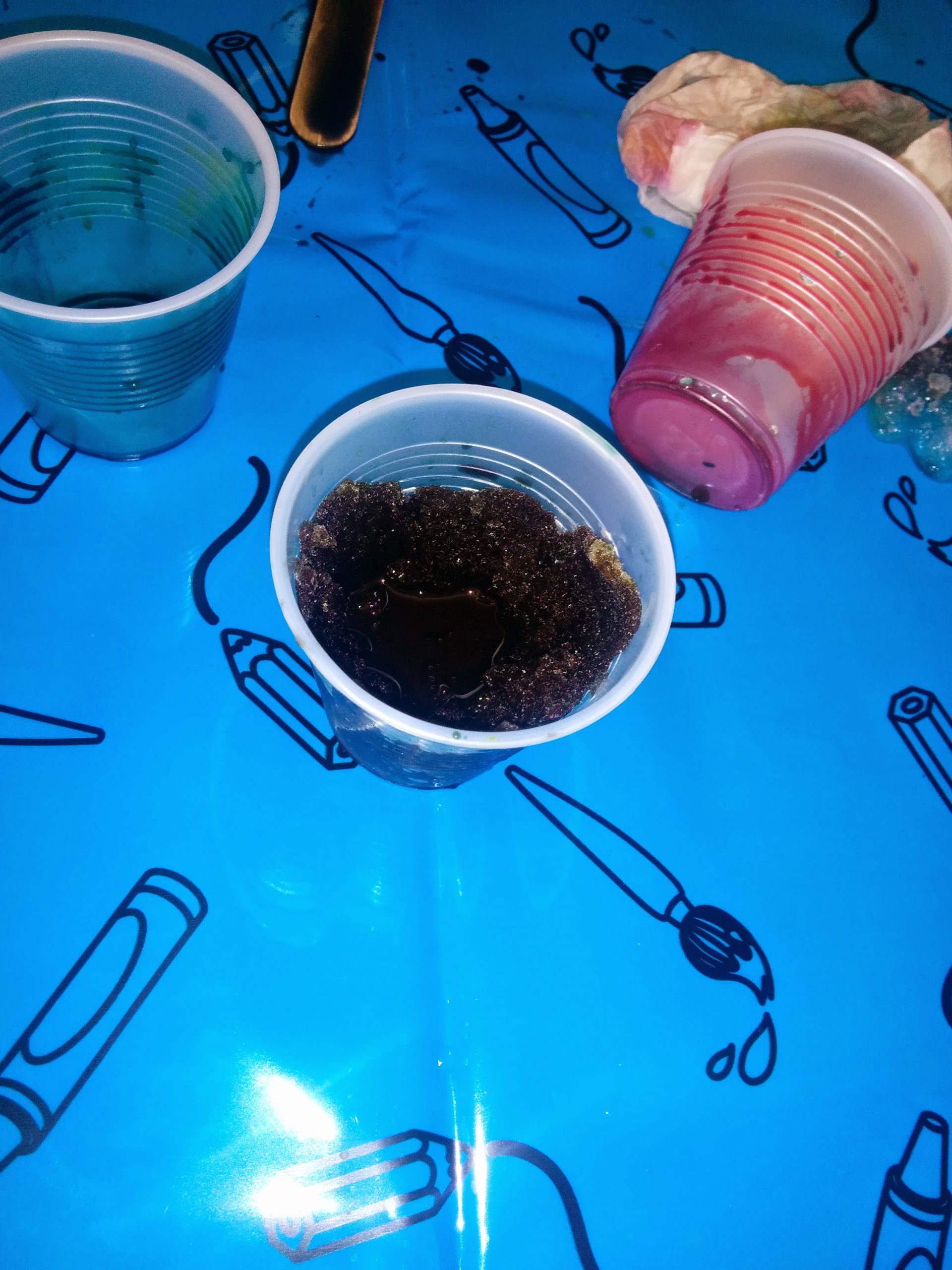
Looking for a new way to support outdoor play? Chantelle Simmons, owner of Under the Oak Tree, sent these ideas for organizing natural materials and creating a play kitchen outside.
“We placed small metal buckets in plant pot holders on the railing to organize our natural materials. We change what are in the buckets quite often. In the picture, there are different types of stones. We also use them to hold acorns, pinecones, seed pods, as well as a variety of other natural materials. We also re-worked an area making it into a kitchen-like environment. We have more plans to extend this area. We have hung garden hose baskets on the wall to hold watering cans, tools, and kitchen items.”
Fill a bucket or other container with water and give toddlers a variety of different types of paintbrushes. Have children paint with the water on the sidewalk or even on a wooden fence. They can paint shapes, letters, pictures, or even just cover the whole space. It can be interesting to watch how the sun dries the water painting and then they can do it all over again!

